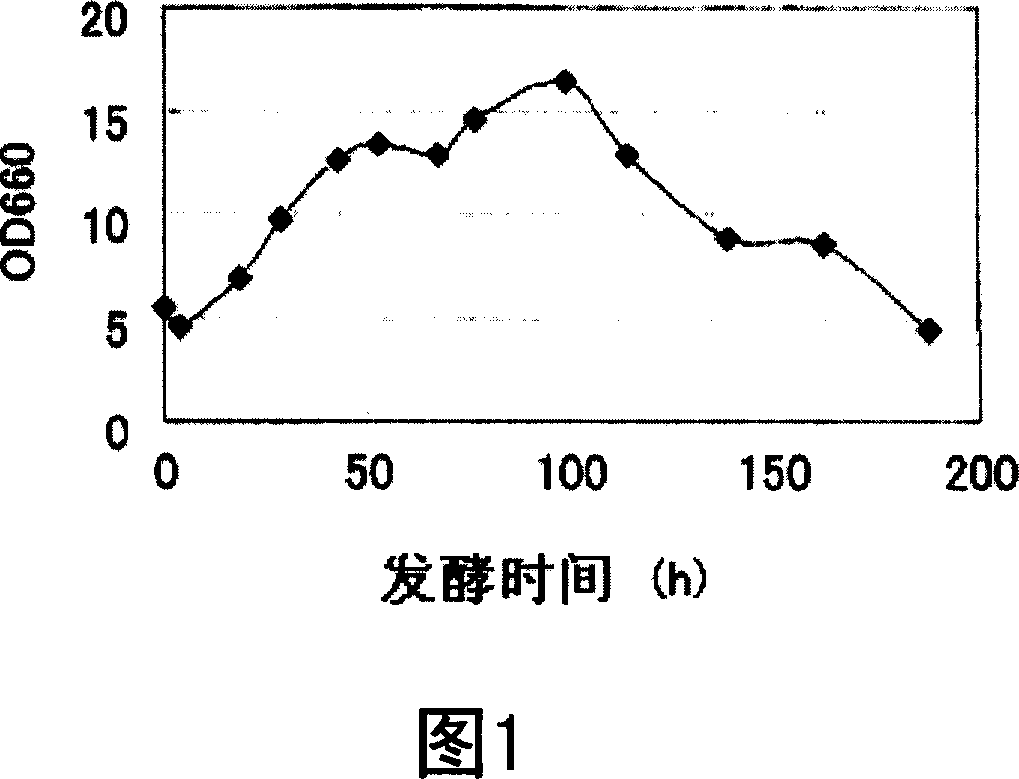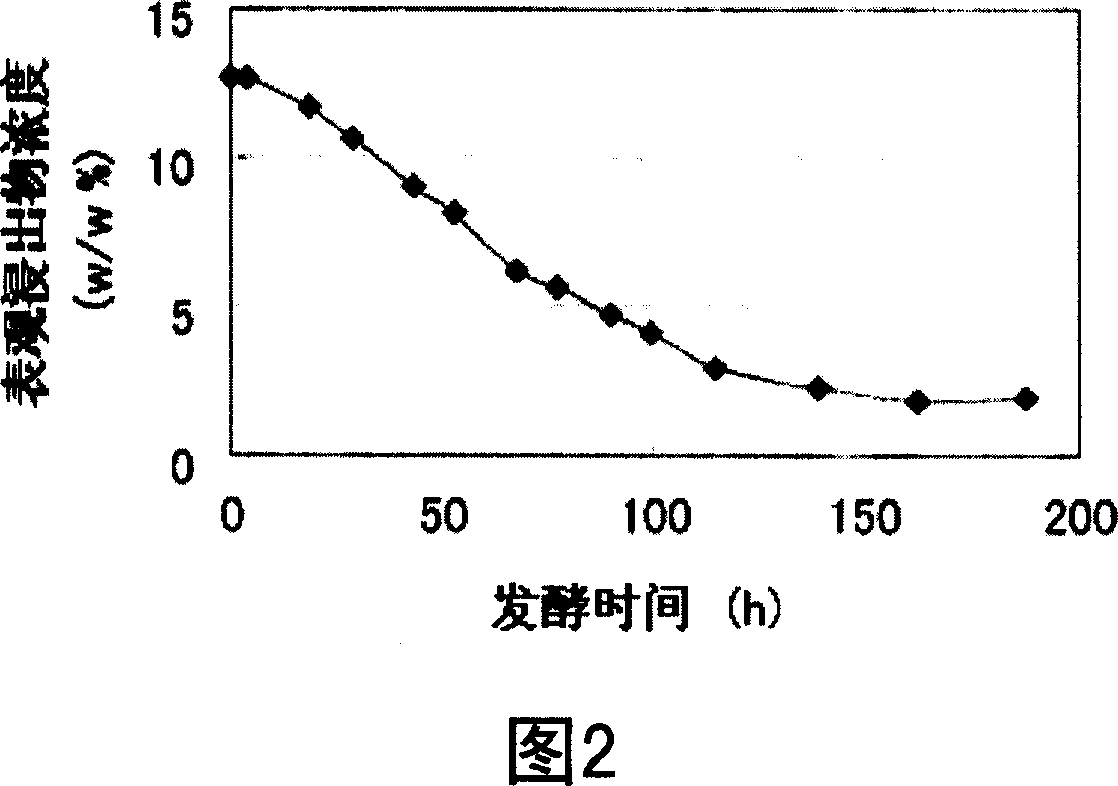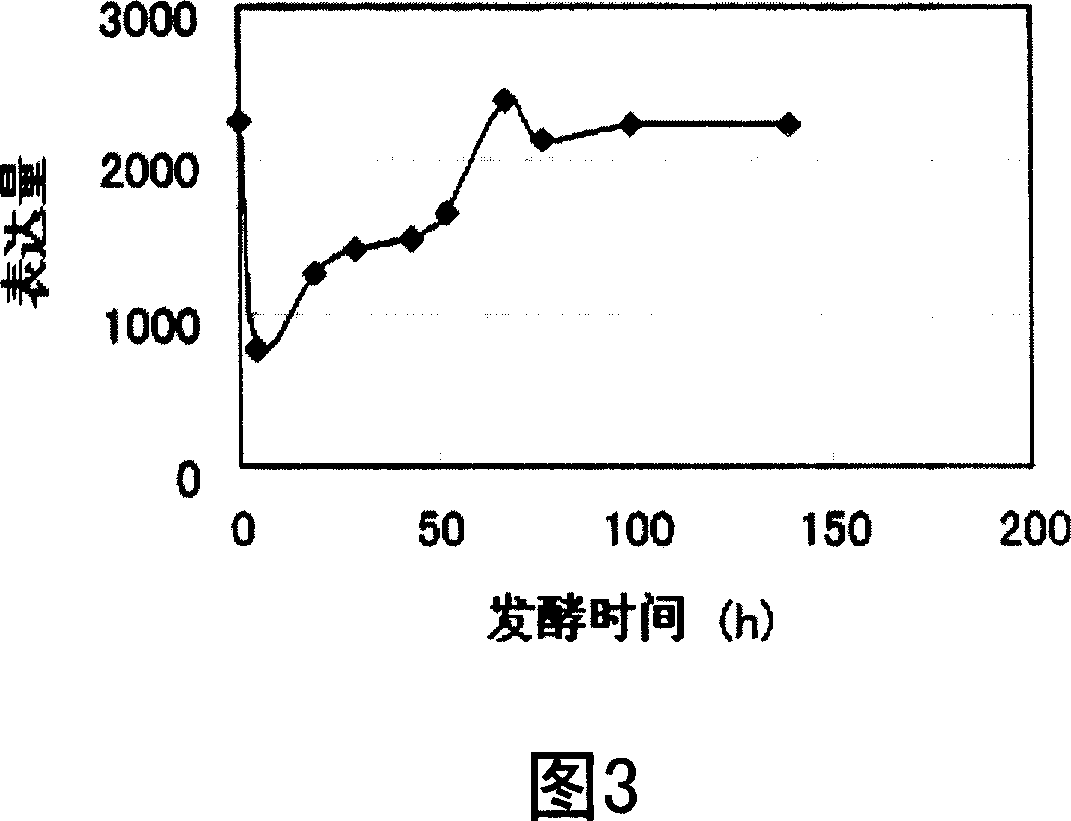Catalase gene and use thereof
A catalase and amino acid technology, which is applied in the manufacture of alcoholic beverages and in the field of alcoholic beverages, can solve the problems of 1-propanol increase and fermentation delay, and achieve the effect of long shelf life and excellent flavor stability
- Summary
- Abstract
- Description
- Claims
- Application Information
AI Technical Summary
Problems solved by technology
Method used
Image
Examples
Embodiment 1
[0107] Example 1: Cloning of the gene encoding catalase (nonScCTT1 ) in Saccharomyces cerevisiae
[0108] As a result of searching the comparative database described in JP-A-2004-283169, a gene non-ScCTT1 (sequence number: 1) encoding catalase unique to S. cerevisiae was discovered. Based on the obtained base sequence information, primers non-ScCTT1_for (sequence number: 5) and non-ScCTT1_rv (sequence number: 6) were designed to amplify the respective full-length genes, and the strain Saccharomycespastorianus Weihenstephan 34 / Chromosomal DNA of 70 strains (sometimes abbreviated as "W34 / 70 strain") was used as a template, and a DNA fragment containing the full-length non-ScCTT1 gene was obtained by PCR.
[0109] The non-ScCTT1 gene fragment obtained above was inserted into pCR2.1-TOPO vector [manufactured by Invitrogen] by TA cloning. The base sequence of the non-ScCTT1 gene was analyzed by the Sanger method (F. Sanger, Science, 214:1215, 1981) to confirm the base sequence. ...
Embodiment 2
[0110] Example 2: Analysis of non-ScCTT1 gene expression in beer test brewing
[0111] The beer yeast Saccharomyces pastorianus W34 / 70 strain was used for the experimental brewing of beer, and the mRNA extracted from the fermentation yeast cell was detected by the Saccharomyces DNA microarray.
[0112] Wort extract concentration 12.69%
[0113] Wort capacity 70L
[0114] Wort dissolved oxygen concentration 8.6ppm
[0115] Fermentation temperature 15°C
[0116] Yeast input amount 12.8×10 6 cells / mL
[0117]The fermented liquid was sampled over time, and the changes over time in the amount of yeast proliferation (Fig. 1) and apparent extract concentration (Fig. 2) were observed. At the same time, the yeast cells were sampled to prepare mRNA, and the prepared mRNA was biotinylated to be hybridized on the brewer's yeast DNA microarray. Signal detection was performed using GeneChip Operating System [GCOS; GeneChip Operating Software 1.0, manufactured by AFFYMETRIX Corporation...
Embodiment 3
[0118] Example 3: Preparation of non-ScCTT1 gene high expression strain
[0119] The non-ScCTT1 / pCR2.1-TOPO described in Example 1 was digested with restriction enzymes SacI and NotI to prepare a DNA fragment containing the non-ScCTT1 gene. This fragment was ligated with pUP3GLP2 treated with restriction enzymes SacI and NotI to construct a non-ScCTT1 high expression vector pUP-nonScCTT1. pUP3GLP2 refers to the YIp type (chromosomal integration type) yeast expression vector containing the orotidine-5'-phosphate decarboxylase gene URA3 at the homologous recombination site, and the introduced gene is passed through the 3-phosphate glyceraldehyde dehydrogenase gene TDH3 Promoter / terminator high expression. Under the control of the promoter / terminator of the galactokinase gene GAL1, the drug resistance gene YAP1 was introduced as a selectable marker, thereby inducing expression in a galactose-containing medium. Also included as a selectable marker for E. coli ampicillin resistan...
PUM
 Login to View More
Login to View More Abstract
Description
Claims
Application Information
 Login to View More
Login to View More - R&D
- Intellectual Property
- Life Sciences
- Materials
- Tech Scout
- Unparalleled Data Quality
- Higher Quality Content
- 60% Fewer Hallucinations
Browse by: Latest US Patents, China's latest patents, Technical Efficacy Thesaurus, Application Domain, Technology Topic, Popular Technical Reports.
© 2025 PatSnap. All rights reserved.Legal|Privacy policy|Modern Slavery Act Transparency Statement|Sitemap|About US| Contact US: help@patsnap.com



